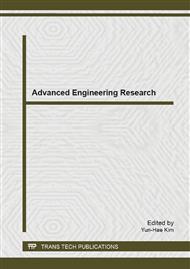p.1144
p.1149
p.1153
p.1158
p.1163
p.1167
p.1171
p.1175
p.1181
The Top Loading Antenna with Fractal Photonic Crystal Used in TD-LTE System
Abstract:
The performance of antenna has the conclusive influence to the performance of mobile communication terminal; one excellent-performance antenna can improve the communication quality of communication device greatly. With the developing of broadband wireless communication technology, the fourth generation mobile communication technology has advanced day after day, and will turn into practical soon. This article aim at the demand of the fourth generation mobile communication technologys standard of TD-LTE, combined with the fractal technology, photonic crystal texture and top loading technique, designing a fractal photonic crystal top loading antenna which can work in 2.6GHz frequency band, and make simulate analysis to the performance of antenna and make the sample of antenna to test. The result from simulation and test shows this antenna has a low return loss and the work bandwidth is big, which is suitable for the fourth generation mobile communications TD-LTE system.
Info:
Periodical:
Pages:
1163-1166
Citation:
Online since:
April 2014
Authors:
Price:
Сopyright:
© 2014 Trans Tech Publications Ltd. All Rights Reserved
Share:
Citation:


